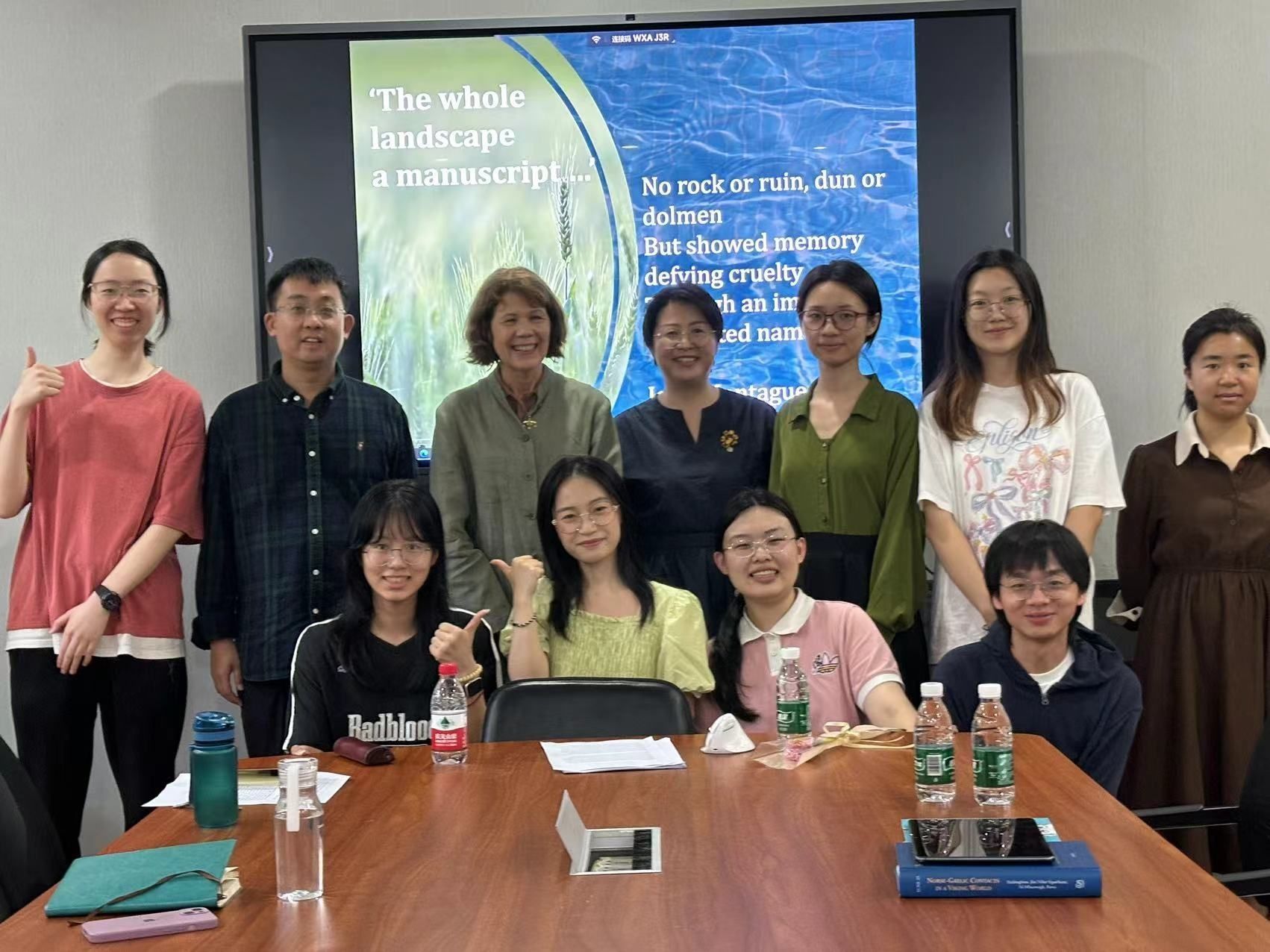On the afternoon of September 19, Professor Máire Ní Mhaonaigh from the Department of Anglo-Saxon, Norse, and Celtic at the University of Cambridge delivered a lecture titled "Naming and Claiming the Landscape: Reading Medieval Irish Dinnshenchas Texts" at our Centre.
Professor Ní Mhaonaigh began by explaining the etymology of "Dinnshenchas," which is derived from the modern Irish word Dinnsheanchas or the Old Irish Dindshenchas, combining dind (meaning "hill" or "landmark") and senchas (meaning "knowledge" or "tale"). This genre includes approximately 10,700 lines of prose and verse, referencing around 300 Irish place names and their associated natural geography. The earliest examples of such texts in medieval Europe can be traced back to Isidore of Seville's Etymologiae, which also influenced early medieval Ireland.
Professor Ní Mhaonaigh provided examples of place-name poetry from the texts. For instance, one poem about the River Boyne suggests that its name derives from "white cow" (Bó-find), linking it to other significant rivers such as the Severn in England, the Tiber in Rome, and the Euphrates and Tigris in Babylon, ultimately connecting it to the underworld. However, she pointed out that this poem was actually composed by the professional poet Cúán ua Lothcháin, who was patronized by Máel Sechnaill mac Domhnaill, the King of Tara in the early 11th century. The poem clearly served a political purpose, praising the king.
Professor Ní Mhaonaigh emphasized that the Dinnshenchas texts extend beyond mere geographical references; they embody political praise relevant to medieval Ireland and reflect influences from continental Europe and Christian texts, showcasing the openness of these texts.
The lecture, lasting over an hour, greatly benefited the attendees. Following her presentation, students and faculty raised questions regarding the relationship between Dinnshenchas poetry and Irish identity, comparisons with Shan Hai Jing (Classic of Mountains and Seas), the interplay between oral traditions and written literature in the medieval period, and research methodologies related to Dinnshenchas. Professor Ní Mhaonaigh patiently and thoroughly addressed each inquiry.
The engaging lecture and discussion left the audience eager for more, and many expressed their gratitude to Professor Ní Mhaonaigh for her insights.


